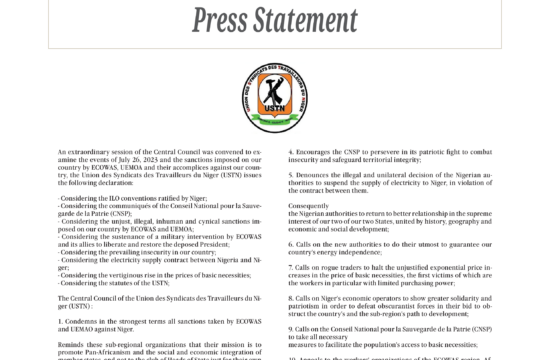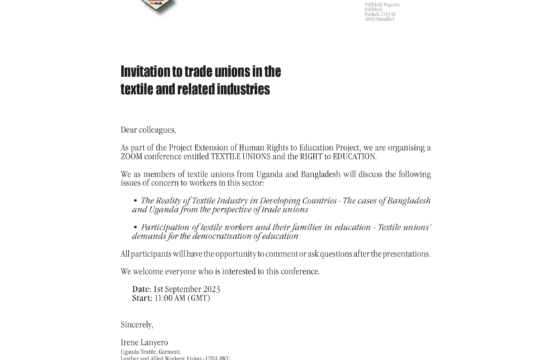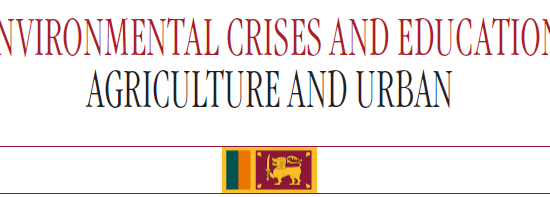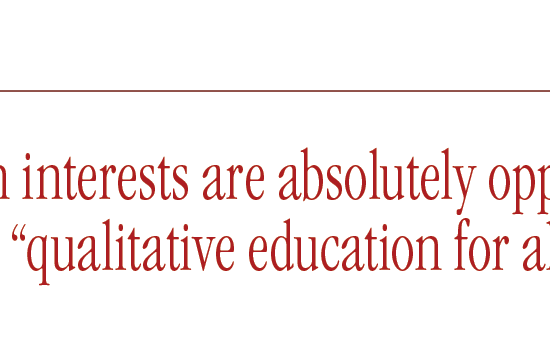Nargis Jahan
Bangladesh Women Workers Welfare Union – BWWWU
Privatization refers to any means by which services, infrastructure and functions traditionally or ideally performed by government are wholly or partially owned, provided, managed or delivered by private actors / privately employed workers. It includes public-private partnerships, corporatization of public services, outsourcing of public service employment and euphemisms like ‘’asset recycling”. This factsheet focuses on the privatization of services that are essential in the advancement of women’s human rights, primarily: healthcare, education, drinking water and sanitation, water, energy, emergency services, public administration, criminal justice ,transportation,Telecommunication, Railway, municipality, bank etc.
The programme of state enterprise privatization pursued by the government of Bangladesh since 1975, largely under the influence and financial conditions of the aid agencies, has been subject to widespread debate. In 1991 at the suggestion of the world bank, the government of Bangladesh formed the Privatization Board to ensure better outcomes of privatization. This article investigates whether firms privatizer under the auspices of the privatization Board up to 1996 were adding to the nation economic growth or —as critics claimed –to individuals families pockets. More specially, it examines weather enterprises privatized in 1991-1996 reversed previous losses and introduced better management controls, leading to increased investment, productivity and overall organizational effectiveness and efficiency. The major findings are not supportive on privatization policy, indicating that performance of privatized enterprises has not improved significantly. Without denying the economic problems of Bangladesh ‘s public enterprises, past and present, this article question the performance of privatized companies in term of their declining profitability and productivity; employment conditions and trade union and individual rights; alerted distributions of value added in absolute and relative terms and serious lack of financial transparency and accountability.
A study report on privatized industries in Bangladesh conducted by the Privatization Commission in 2010 found that only 59 percent of the privatized entities were in operation after their privatizations and 20 percent of them were permanently closed down – implying lack of planning or business motivation of their private owners (Islam, 2015).
Bangladesh has privatized more public enterprises than any other country, a total of 1,076, of which 609 were in the industrial sector. A big leap in the privatization program occurred in 1982, under another new government. As part of the New Industrial Policy (NIP) of June 1, the decision was made to return 33 jute mills and 27 textile mills to the former Bangladeshi owners. Jute and textiles are the two major industries in the country.
Key Points
• Privatization has a discriminatory effect because quality public services are essential in overcoming exclusion, systemic discrimination and because women’s reduced economic and political power means they are often less likely to afford privatized services.
• When public services are diminished and delivered at a profit, women are forced to fill in the gaps of delivering health and social care, acquiring water and energy and thereby provide an unpaid subsidy to the state and economy. Consequently, privatization increases the gendered burden of unpaid work.
• It is the responsibility of the state to ensure women enjoy their human rights. Outsourcing that obligation to corporations leads to rights violations and is fundamentally at odds with the principles that underpin human rights and democratic obligations. Now details:-
What is the role of the private sector in employment
generation?
The private sector provides around 90% of employment in the developing world (including formal and informal jobs), delivers critical goods and services and contributes to tax revenues and the efficient flow of capital.
Privatization of public services routinely leads to lower wages, working conditions and security of employment but also often reduces the share of women employed in those industries. Public service employment is one of the few opportunities for women to enjoy their right to Decent Work and they are proportionally more impacted by public service employment cuts. The UN Independent Expert on Foreign Debt recognized that “downsizing and privatization of State-owned companies have often affected female employment disproportionately” and in a later report, that “cuts to public-sector jobs, and the privatization of services, tend to negatively affect women more than men”
Working women in Bangladesh
Women are mostly involved in post-harvesting work. Women’s participation in the labour force has increased manifolds over time in Bangladesh. Compared to 4 percent in 1974, female participation in the labour force has increased to 35.6 percent in 2016.This change is much faster than the growth of male labour force participation which increased to 81.9 percent in 2016 from 80.4 percent in 1974. Female participation in Bangladesh’s labour force has increased to 42.68% in 2022, up from 36.3% five years ago, according to a survey report conducted by the Bangladesh Bureau of Statistics (BBS) released on Wednesday (29 March).
Interestingly, labour force participation among rural women is much higher (37.6 percent) than urban women (30.8 percent). Not only in the export oriented readymade garments sector but in many non-traditional and emerging sectors, such as hotels and restaurants, transportation, real estate services, telecommunications, banking and insurance sectors, women’s participation is increasing. This is due to the fact that with increased access to higher education, the prospect for getting into high valued job market has expanded for women in Bangladesh. However, as a late comer to such services, the number of female participants is still low in these sectors. Moreover, the progress has not been uniform in all sectors. There is also discordance within the sector. Not many women are seen at the managerial and senior positions of organizations. Under-representation of women in decision making jobs is due to a mix of economic, social and cultural situations.

Challenges
Working women in Bangladesh face different kinds of challenges from different grounds irrespective of their socioeconomic backgrounds. . The extent to which each of the challenges is responsible for disturbance in women’s careers has been measured in this study. Five challenges namely- family issues, discrimination in terms of facilities, working conditions at the office, social challenges, and sexual harassment, have been considered. sexual harassment as the most significant among the aforementioned challenges to have an impact on women’s careers finds that sexual harassment, discrimination in terms of facilities, and family challenges are mostly responsible for creating an adverse impact on women’s careers which may aid in creating a better workplace for working women in Bangladesh.
To elevate the status and well being of women in Asian society, their substantive representation in government and political organizations is imperative. Their relative absence and even alienation from these sources of power inevitably relegate them to disadvantaged positions with few legal rights. The political exclusion of women in Asia is directly related to the expansion of their economic marginalization and impoverishment. If the political exclusion and declining economic status of women remain unchallenged, there is little hope for improvement of women’s position in the society. women will not have a greater claim on the society as a gender group unless specific women’s issues are included in the political and social agenda of globalization. To ensure that women’s economic and legal rights are championed, women’s labor-oriented movements now must be something more than traditional male-oriented labor movements. Because the cultural norms and values determining women’s adverse social position are tied to the dominant patriarchal relations within a society, any meaningful changes that would raise women’s social status will not come about without some form of organized resistance to gender inequality.
Therefore, rejection of unequal gender relations can be effectively pursued only via organized political-social action. Organizing and soliciting broad-based social and political responses appealing for social justice based on greater inclusion of the most vulnerable segments of the labor force in general and women in particular are mandatory. As a case in point, the privatization of social security and the negative impact on women are explored in the following section.
Women’s labor plays a crucial role in the contemporary restructuring of Asia’s industrializing economies. Women are becoming increasingly active in both the rural and the urban economy. It is their labor that provides the ultimate basis of international competitiveness of most Asian countries.
Women are a direct source of cheap labor, especially in export manufacturing industries, whether as formal, informal, or casual labor. Among the workers of the world, women are all too often the most vulnerable and the most exploited during the adjustment and/or `processes dominated by privatization.
The harsh conditions set by the global commodity chain make Bangladesh one of the worst countries in the world to be a worker. A study published in January 2023 shows that during the pandemic, multinational garment companies squeezed subcontractors to cut costs, which resulted in harsher conditions for workers.
Role of Trade union and
Privatization
A trade union is an organization of worker who have come together to achieve common goals such as protecting the integrity of its trade, improving safety standards, achieving higher pay and benefits such as health care and retirement, increasing the number of employees an employer assigns to complete the work, and better working condition. Trade unions are the controller of the labor force of an industry which works for the betterment of the country’s trade by ensuring the right of the labor force. The trade union, through its leadership, bargains with the employer on behalf of union members and negotiates labour contact with employers. Trade union can helping social adjustment .Workers have to adjust themselves to the new working conditions, the new rules and policies . workers come from different backgrounds may become disorganized , unsatisfied and frusted. Union help them such adjustment.
Problem is these are lack of consciousness, lack of utility, lack of knowledge, political influence division of trade union. The rate of unionization has increased in the RMG sector, trade union affiliation is low in Bangladesh compared to many other developing countries. Trade unions in Bangladesh deplore the fact that, when consulting the social partners on the implementation of the SDGs as part of the tripartite dialogue, the government prioritises the input of employers, while trade unions are not visibly and effectively involved in the overall implementation process.
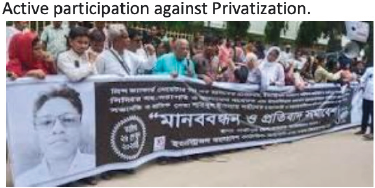
What is the role of the private sector in employment generation?
Contribution of private sector in the economy of Bangladesh. Of the country’s investment at 31.56 per cent of the GDP (gross domestic product), the private sector’s share is 23.40 percentage points, that is 74.15 per cent of the overall investment. Bangladeshi private companies are meeting more than 95 per cent of local demand and exporting goods to more than 100 countries. The private sector provides around 90% of employment in the developing world (including formal and informal jobs), delivers critical goods and services and contributes to tax revenues and the efficient flow of capital.
Contribution of private sector in the economy of Bangladesh.
Of the country’s investment at 31.56 per cent of the GDP (gross domestic product), the private sector’s share is 23.40 percentage points, that is 74.15 per cent of the overall investment. Bangladeshi private companies are meeting more than 95 per cent of local demand and exporting goods to more than 100 countries. Since the advent of the Covid-19 pandemic, the global economy has failed to cope up and is struggling to rebound. The pandemic has had a profound impact on the world of work in the first half of 2020,but in Bangladesh the recovery could be further delayed by a more threatening second wave. The most vulnerable among the workers were both regular and casual workers self- employed and small entrepreneurs of different sectors including MSMEs, construction, road, commerce, tourism and other informal sectors. Public policies and action taken by employers to tackle the challenges in the world of work have been largely influenced by the active participation for the trade unions across countries. Out of 133 countries ,108 have used “social dialogues” as a key instrument to address the concerns of the workers. Trade unions in Bangladesh have also played an active role in humanitarian issues. But their role was underwhelming in the case of workers rights and concerns during this crisis period.
Present Challenges
The negative effects of privatization are: One significant inconvenience to perceive is the chances for bribery and corruption that accompany privatization. Expanding the bridge between the rich and poor people. Business models are imposed by private organizations. Disadvantages on prices as the firms are price takers.
Disadvantages of privatization
Natural monopoly. A natural monopoly occurs when the most efficient number of firms in an industry is one. Public interest.
Government loses out on potential dividends.
Problem of regulating private monopolies.
Fragmentation of industries.
Short-termism of firms.
A more important chance for misrepresentation and debasement to happen. Greater expenses for customers. Firmness because of long-haul contracts. Profit is an essential inspiration.
Why is Bangladesh at risk?
Bangladesh is prone to flooding and waterlogging because of its location as a river delta. In 2012, it was labeled a Least Developed Country by the United Nations, with high rates of poverty and weak government, meaning it is especially vulnerable to natural disasters. Denationalization and disinvestment can be the methods of privatization. Selling off or liquidating Public Sector Unit’s shares to private enterprises.
In Bangladesh, we need to focus more attention on the post-privatization problems faced by enterprises. Indeed, as many problems are common to all privatized or non-privatized enterprises, it is important that we examine the issue to improve performances of the entire private sector.
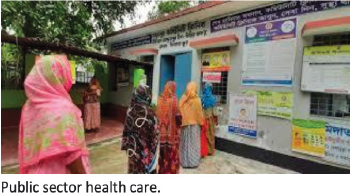
As a result, they are often saddled with many problems mentioned above, such as excess workers, absolute products, improper financial structures and lethargic marketing departments . For such enterprises, mere ownership changes may not mean much if it doesn’t lead to the required restructuring and overhauling. Enterprises facing competition may survive without improving efficiency if someone is bailing them out Sometimes the problems are cultural, arising from deeply ingrained attitudes and practices. This has been a pervasive problem in the ex-socialist economies.
Private health care services :
Private enterprises cover roughly 60 percent of the health sector in Bangladesh, employing approximately 70,000 doctors with roughly 100,000 hospital beds, providing employment to around 12 lakh people about 130,000 CHWs, most of them women, deliver health education, preventive, promotive, and limited curative care across Bangladesh’s rural areas. About 50,000 of these CHWs work for the government, and the rest work for NGOs and the private sector.
Bangladesh has a pluralistic health system where both public and private sector providers play important roles. According to a study in 2021, the country has about 148,000 community health workers of which about 60,000 are supported by the Government; the rest being in BRAC and other non-government organizations.
District hospitals, maternal and child welfare centers are considered to be on the secondary level. Upazila health complexes, union health & family welfare centers, and community clinics (lowest-level healthcare facilities) are the primary level healthcare providers.
Labor force, total in Bangladesh was reported at 74459362 in 2022, according to the World Bank collection of development indicators, compiled from officially recognized sources. There are some reasons to be optimistic the developments have put in place facilities of broadly the planned specification in broadly the right locations. Causes for concern are the poor quality of some of the construction, some deficiencies in the facilities, furnishing and equipment and poor maintenance. However, in terms of operation and service development the picture is less encouraging. Many of the problems found in other government health services have appeared here – shortages of drugs and consumables, insufficient skills in some staff, staff not available when needed, and generally services considered to be of a poor standard by users. There are also risks in that some previously successful outreach services are to be replaced, and there is a need to ensure that the benefits of these are retained. It is clear that at present the community clinics are playing at most a limited role in the development of ESP services for those most in need.
VIOLENCE AGAINST WOMEN IN BANGLADESH
The present study is encompassing mainly domestic violence, dowry-related violence, rape, acid attack, and eve-teasing. Nowadays violence against women has become one of the severest problems of Bangladesh. „Bangladesh stands second in the world in terms of violence against women in different forms like women battering, wife-beating, domestic and dowry-relate violence, acid attack, rape, physical and verbal harassment, fatwa, sexual harassment in the workplace, trafficking and prostitution, polygamy and child abuse „. Violence severely infringes the freedom and right of mobility of a woman. It has reached to such an alarming situation that many women committed suicide in the recent years due to violence against women. Lastly, it also emphasized on the moral response for ensuring women honor, dignity and rescuing the women from ill-conduct. This article focuses on the issue of violence against women in:
A movement to combat sexual discrimination and to gain full legal, economic, vocational, educational, and social rights and opportunities for women, equal to those of men.
A movement or campaign to achieve women’s rights, remove inequality and all sorts of discrimination and dominations.
The Women’s Liberation Movement is the social struggle which aims to eliminate forms of oppression based on gender and to gain for women equal economic and social status and rights to determine their own lives as are enjoyed by men.
Evaluation
Privatization activities are expanding relatively unchecked into traditionally public sector domains on national and international levels. There is concern that privatization negatively impacts the most vulnerable segments of the workforce, especially women workers. The economic plight of female workers is but one of a number of increasingly disturbing effects of privatization as it continues to grow globally in scope and role. More than ever, the caution to consider the social consequences of privatization that threaten basic social justice and human rights, particularly in the transition economies of Europe and the emerging economies of Asia, must be take seriously if there is to be any hope for an equitable and peaceful global community.
The Way forward:
A high –level taskforce , chaired by a respected person from the private sector. This task force should be asked to submit a report with tow month providing a detailed strategy on privatization , including of the privatization commission. Ensuring an effective legal and regularity framework.
The state acting as an owner establishing a clear and consistent ownership policy. Relationship with stakeholders and equitable treatment on shareholders. Responsibilities of the Trade Union of the entitles before and after privatization. A monitoring and Evaluation of cell manned by International and country experts should be established to review the work on a sustain basis. The trade union should set their strategies on three areas: Social diologue addressing short term challenges. Social diolouge addressing medium /long term challenges.
Strengthening the social diologues mechanism across different sectors.They should also work with the ministry of labour and Employment as well as the international labour Organization to make their ooperations more functional and effective.
9. Trade Union should work with the government to priorities the interest and needs of workers.it is essential to develop and innovative, effective and transport mechanism for the distribution of cash support to the affected workers. Union should also lead negotiations regarding issue support by lobbying for bilateral agreements with host countries.
Thanks.


